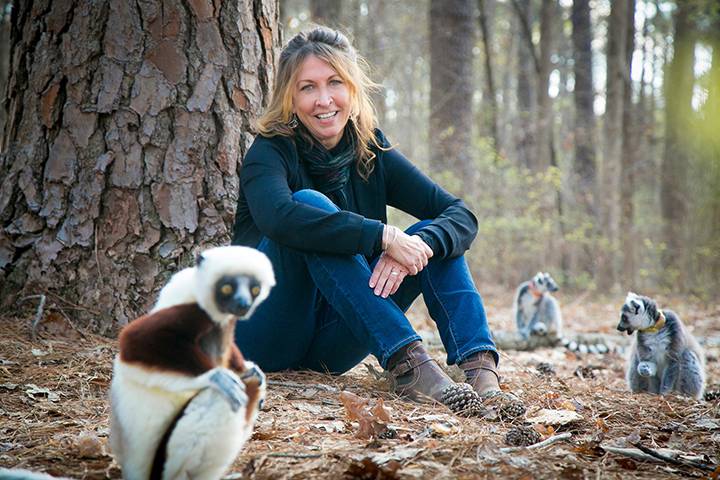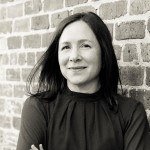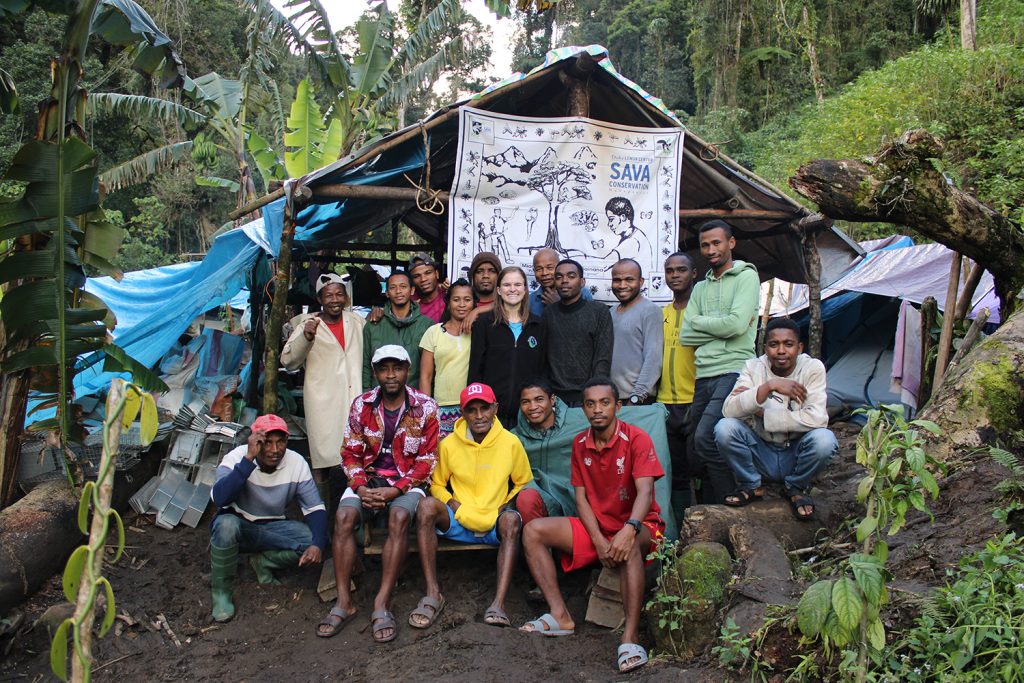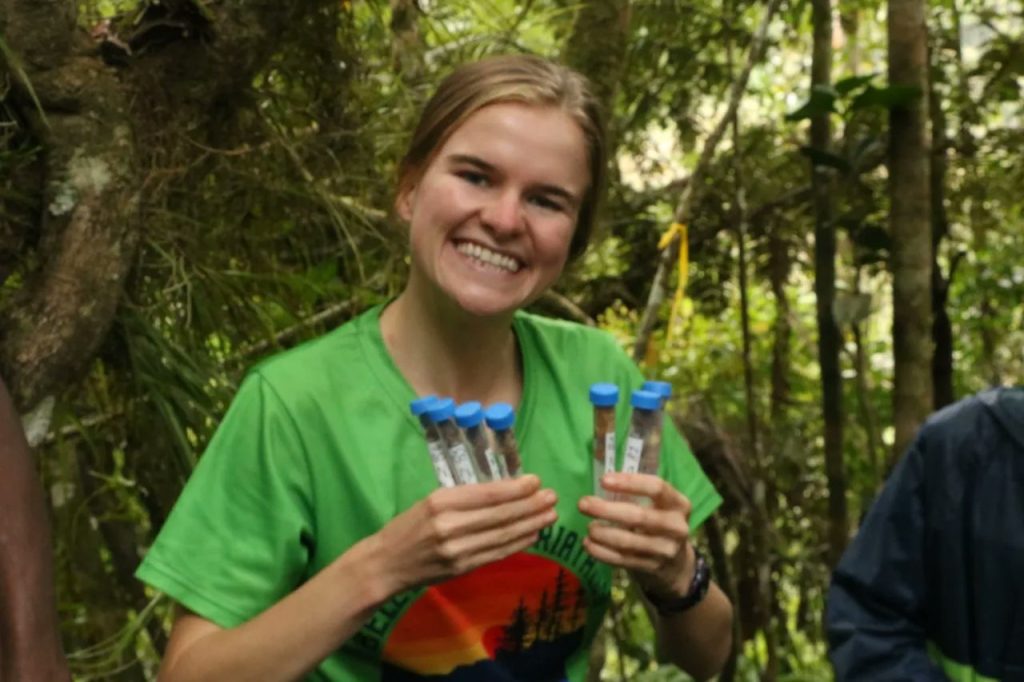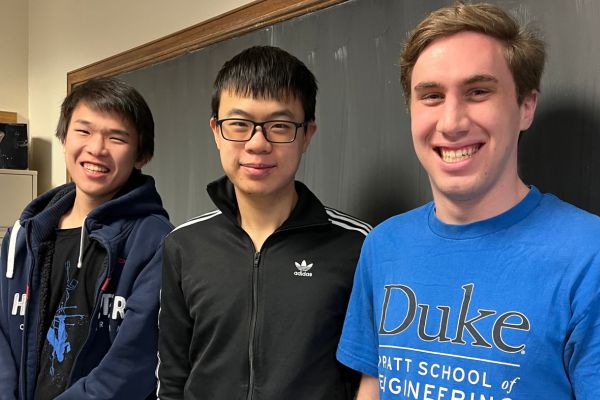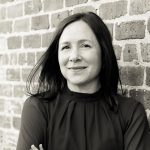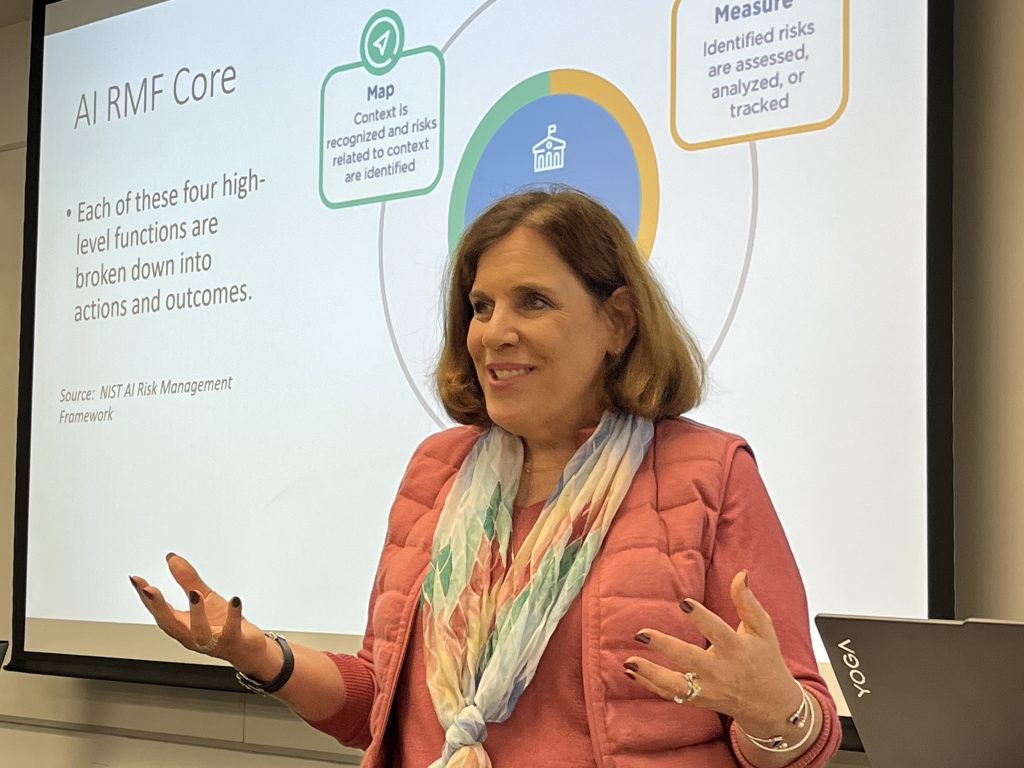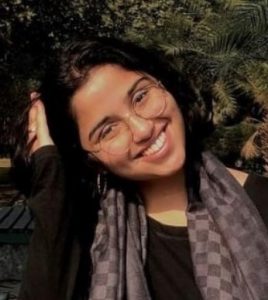Sure, A.I. chatbots can write emails, summarize an article, or come up with a grocery list. But ChatGPT-style artificial intelligence and other machine learning techniques have been making their way into another realm: healthcare.
Imagine using AI to detect early changes in our health before we get sick, or understand what happens in our brains when we feel anxious or depressed — even design new ways to fight hard-to-treat diseases.
These were just a few of the research themes discussed at the Duke Summit on AI for Health Innovation, held October 9 – 11.

For assistant professor of biomedical engineering Pranam Chatterjee, the real opportunity for the large language models behind tools like ChatGPT lies not in the language of words, but in the language of biology.
Just like ChatGPT predicts the order of words in a sentence, the language models his lab works on can generate strings of molecules that make up proteins.
His team has trained language models to design new proteins that could one day fight diseases such as Huntington’s or cancer, even grow human eggs from stem cells to help people struggling with infertility.
“We don’t just make any proteins,” Chatterjee said. “We make proteins that can edit any DNA sequence, or proteins that can modify other disease-causing proteins, as well as proteins that can make new cells and tissues from scratch.”

New faculty member Monica Agrawal said algorithms that leverage the power of large language models could help with another healthcare challenge: mining the ever-expanding trove of data in a patient’s medical chart.
To choose the best medication for a certain patient, for example, a doctor might first need to know things like: How has their disease progressed over time? What interventions have already been tried? What symptoms and side effects did they have? Do they have other conditions that need to be considered?
“The challenge is, most of these variables are not found cleanly in the electronic health record,” said Agrawal, who joined the departments of computer science and biostatistics and bioinformatics this fall.
Instead, most of the data that could answer these questions is trapped in doctors’ notes. The observations doctors type into a patient’s electronic medical record during a visit, they’re often chock-full of jargon and abbreviations.
The shorthand saves time during patient visits, but it can also lead to confusion among patients and other providers. What’s more, reviewing these records to understand a patient’s healthcare history is time-intensive and costly.
Agrawal is building algorithms that could make these records easier to maintain and analyze, with help from AI.
“Language is really embedded across medicine, from notes to literature to patient communications to trials,” Agrawal said. “And it affects many stakeholders, from clinicians to researchers to patients. The goal of my new lab is to make clinical language work for everyone.”

Jessilyn Dunn, an assistant professor of biomedical engineering and biostatistics and bioinformatics at Duke, is looking at whether data from smartwatches and other wearable devices could help detect early signs of illness or infection before people start to have symptoms and realize they’re sick.
Using AI and machine learning to analyze data from these devices, she and her team at Duke’s Big Ideas Lab say their research could help people who are at risk of developing diabetes take action to reverse it, or even detect when someone is likely to have RSV, COVID-19 or the flu before they have a chance to spread the infection.
“The benefit of wearables is that we can gather information about a person’s health over time, continuously and at a very low cost,” Dunn said. “Ultimately, the goal is to provide patient empowerment, precision therapies, just-in-time intervention and improve access to care.”

David Carlson, an associate professor of civil and environmental engineering and biostatistics and bioinformatics, is developing AI techniques that can make sense of brain wave data to better understand different emotions and behaviors.
Using machine learning to analyze the electrical activity of different brain regions in mice, he and his colleagues have been able to track how aggressive a mouse is feeling, and even block the aggression signals to make them more friendly to other mice.
“This might sound like science fiction,” Carlson said. But Carlson said the work will help researchers better understand what happens in the brains of people who struggle with social situations, such as those with autism or social anxiety disorder, and could even lead to new ways to manage and treat psychiatric disorders such as anxiety and depression.



